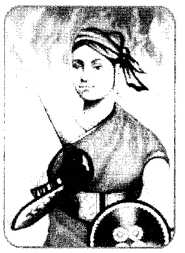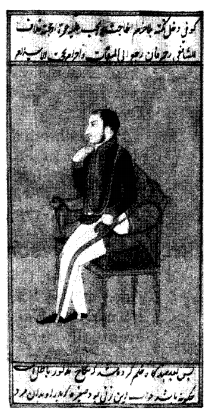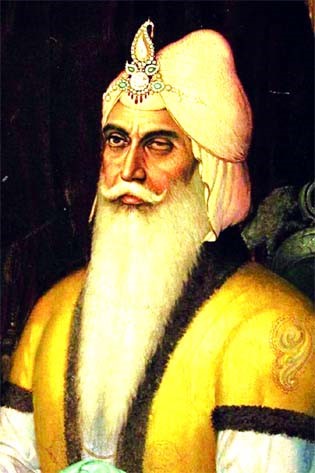History - Class 8
Our Past - III
Chapter 2: From Trade to Territory The Company Establishes power
Intext Questions.
Question 1: How could the Nawab of Bengal, Murshid Quli Khan, not protest?
Answer: The Farman issued by Aurangazeb granted the right to do duty free trade to the company and this was misused by company officials and this led to huge loss of revenue. Thus murshid Ali khan could not refuse.
Question 2: Could individuals so easily give up their caste and religious feelings? Could they see themselves only as soldiers and not as members of communities?
Answer:
A. No, Religion is a close feeling of conscience and one has to fight oneself to come out of it and external forces could do so little. And caste is a feeling of oneness especially in India. So an individual couldn’t give up their caste and religious feelings so easily.
B. No, Human being is a social animal. They can’t see themselves as soldiers and not as members of communities. Patriotism is a Virtue but it’s difficult to give respect to the foreign territory which is spoiling our own country’s growth and one can’t be a soldier to kill it’s, own people to help foreign kingdom.
Question 3: What did the Sepoys feel? How did they react to the changes in their lives and their identity – that is, their sense of who they were?
Answer: Sepoys, felt that they are being alienated by giving away their culture and traditions. They have opposed Britisher’s policies of being away from one’s caste and religion. They refused to go into the Sea and use the weapons made by fat of religious hatred animals. They supported their own people in times of difficulty. They still carried the patriarchal feeling of India.
Activity:1
Question: Imagine that you are a young Company official who has been in India for a few months. Write a letter home to your mother telling her about your luxurious life and contrasting it with your earlier life in Britain.
Answer:
Dear mother,
Hello Mom! How are you? Hope you are doing well. As you already know that I have been to India for few months. This is a wonderful country. I feel comfortable being here than in Britain.
The food habits and lifestyle over here is very much comfortable to me compared to Britain I feel comfortable over here. I am able to spend luxurious life over here. The work pressure on me is very less. I feel happy to be here.
By the way mom how is your health now? Do take medicines on time. Love you mom.
Bye!!
Yours Lovingly
Gayathri.
Activity:2
Question: Imagine that you have come across two old newspapers reporting on the Battle of Seringapatam and the death of Tipu Sultan. One is a British paper and the other is from Mysore. Write the headline for each of the two newspapers.
Answer:
1.Paper for Mysore: Demise of the tiger. Whole Mysore is mourning the loss of the bravest and efficient ruler.
2.British Paper: British triumph over the tiger of Mysore, Tipu Sultan. British flag hailed in the astonishing Seringapatnam War. The British army was appreciated for its brave fight against one of the popular warriors of India
Activity:3
Question: Imagine that you are a nawab’s nephew and have been brought up thinking that you will one day be king. Now you find that this will not be allowed by the British because of the new Doctrine of Lapse. What will be your feelings? What will you plan to do so that you can inherit the crown?
Answer: If I was in that place, obviously I will feel that I got cheated and I will become the greatest enemy of Britishers and will do everything for the eradication of British Empire from India. I will try to take my revenge. I will join all enemies of Britishers and will lead a group of rebels same as 1857.
Let's Imagine
Question: You are living in England in the late eighteenth or early nineteenth century. How would you have reacted to the stories of British conquests? Remember that you would have read about the immense fortunes that many of the officials were making.
Answer:
A. As a lay person who is not associated with East India Company, nor part of the government I would have surely resented British conquest and its policies of colonialism.
B. As it amounted to subjugation and oppression of the colonial people.
C. It resulted in the massive drain of wealth, exploitation of the colonial people.
Let's recall
Question 1: Match the following:
| 1)Diwani | a) Tipu Sultan |
|---|---|
| 2)Tiger of Mysore | b) right to collect land revenue |
| 3)faujdari adalat | c) Sepoy |
| 4)Rani Channamma | d) criminal court |
| 5)Sipahi | e) led an anti-British movement in Kitoor |
Answer:
| 1)Diwani | a) right to collect land revenue |
|---|---|
| 2)Tiger of Mysore | b)Tipu Sultan |
| 3)faujdari adalat | c) criminal court |
| 4)Rani Channamma | d) led an anti-British movement in Kitoor |
| 5)Sipahi | e) Sepoy |
Question 2: Fill in the blanks:
(a) The British conquest of Bengal began with the Battle of ___________.
(b) Haidar Ali and Tipu Sultan were the rulers of ___________.
(c) Dalhousie implemented the Doctrine of ___________.
(d) Maratha kingdoms were located mainly in the ___________ part of India.
Answer:
A. Plassey
B. Mysore
C. Lapse
D. Western.
Question 3: State whether true or false:
(a) The Mughal Empire became stronger in the eighteenth century.
(b) The English East India Company was the only European Company that traded with India.
(c) Maharaja Ranjit Singh was the ruler of Punjab.
(d) The British did hot introduce administrative changes in the territories they conquered.
Answers:
(a) False, Mughal Empire started to decline in eighteenth century with the emergence of new power, The British.
(b) False, French and Dutch traders also traded with India.
(c) True
(d) False, the British introduced many administrative changes in the territories they conquered.
Let's discuss
Question 4: What attracted European trading companies to India?
Answer: European trading companies were attracted to India due to the following reasons:
(i)They could buy goods at cheap prices and carry them back to Europe to sell at higher prices.
(ii) The fine qualities of cotton and silk produced in India had a big market in Europe.
(iii)Indian spices like pepper, cloves, cardamom and cinnamon were in great demand in Europe.
Question 5: What were the areas of conflict between the Bengal nawabs and the East India Company?
Answer: Areas of conflict between the Nawabs of Bengal and the East India Company:
- Requests to grant concessions to Company.
- The demand of large tributes from the Company for the right to trade.
- Denial of right to minting (making) coins.
- Stoppage of fortification expansion.
- Nawab claimed that the company was depriving the Bengal government of a huge amount of revenue.
- Undermining the authority of the nawab.
Actions are taken by the Company
- Refusal to payment of taxes by the Company.
- Writing of disrespectful letters by the Company.
- Trying to humiliate the nawab and his officials.
- Enlargement of settlements by the Company, Buying villages.
- The rebuilding of forts.
Question 6: How did the assumption of Diwani benefit the East India Company?
Answer: The assumption of Diwani benefited the East India Company in the following ways:- The Diwani allowed the Company to use the vast revenue resources of Bengal.
- The outflow of gold and silver which the Company imported to buy goods in India was stopped.
- The revenue from Bengal now could be used to purchase cotton and silk textiles in India, maintain Company troops, and meet the cost of building the Company fort and offices at Calcutta.
Question 7: Explain the system of “subsidiary alliance”.
Answer: Under the subsidiary alliance;- Indian rulers were not allowed to have their independent armed forces.
- The rulers were to be protected by the Company, but for this, they had to pay money.
- If the Indian rulers failed to make the payment, then part of their territory was to be taken away as a penalty.
Question 8: In what way was the administration of the Company different from that of Indian rulers?
Answer: Administration of Company was different from that of Indian Rulers.| Company’s Administration | Indian Ruler's Administration |
|---|---|
| Administrative units divided into Presidencies. Three Presidencies—Bengal, Madras, and Bombay. Each Presidency ruled by Governor and districts by collectors Governor-General—the Supreme head. The presidency was further divided into districts and the collector was head of the district. | Four parts of each kingdom—District, Pargana, Tehsil, and Villages. Controlled by zamindars and peasants. King, the supreme head. |
Question 9: Describe the changes that occurred in the composition of the Company’s army.
Answer:- The East India Company recruited professional soldiers in place of sawars and Foot soldiers.
- The soldiers were trained in new warfare technology in European style.
- The soldiers were armed with muskets and matchlocks.
Let's do
Question 10: After the British conquest of Bengal, Calcutta -grew from a small village to a big city. Find out about the culture, architecture, and the life of Europeans and Indians of the city during the colonial period.
Answer: Indians were influenced by the British culture, architecture, and lifestyle.- Culture: British influence began.
- Architecture: Influenced by British Architecture (fortification of the city, churches, etc.). Rich Indians started constructing bungalows in the English style.
- Life: English education, English clothes, became be popular.
The city of Calcutta started growing with European towns growing south and south-west of Park street. An Anglo- Indian residential area grew to its north. To the farther north and east to this area, there developed residences of the native people.
Thus, the city of Calcutta had a small high amenity area for the British owners and managers, surrounded by a small middle income area and low-income areas where the., factory labour lived.
- Calcutta developed as a cultural city of India. Dramas, Group theatres, Indian classical music, religious and social festivals, etc. enriched its cultural heritage. The people participated and contributed in these events enthusiastically. Bankim Chandra, Rabindra Jfath Tagore, etc. were some prominent poets of the colonial age.
- Calcutta was also known for its cuisine. Rice and macher jhol (fish curry), rasagoila, sandesh, misthLroti, etc. were famous.
- During the colonial period many grand examples of architecture, Calcutta had seen. These were adorned with Gothic, Roman, Oriental and Indo-Islamic motifs. Indian Museum, Victoria Memorial, National Library of India, Academy of fine arts etc. are some examples.
Question 11: Collect pictures, stories, poems, and information about any of the following—the Rani of Jhansi, Mahadji Sindhia, Haidar Ali, Maharaja Ranjit Singh, Lord Dalhousie, or any other contemporary ruler of your region.
Lakshmibai was born probably on 19 November 1828 in the holy town of Varanasi in a Marathi brahmin family. Her father was Moropant Tambe. Her father worked for a court of Peshwa of Bithoor district.
Peshwa brought Manikarnika up like his own daughter. The Peshwa called her “Chhabili”, which means “playful”.
She was educated at home and was more independent in her childhood than others of her age; her studies included archery, horsemanship, and self-defense.

Lord Dalhousie is one the most negatively remembered personality in the rule of East India Company. He ruled India with his full efficiency from 1848 to 1856 A.D. In India, he was famous for various negative and positive reasons.
Positive:- Starting of Railway in 1853 A.D. for the first time, between Bombay to Thane.
- Starting of postal and telegraph services in India
- Starting of widow remarriage in 1856 A.D.
- Completion of Ganges Canal.
- Reform in Indian civil services.

- East India Company captured the princely state of Punjab in 1849 A.D.
- Second Anglo-Burmese War.
- The doctrine of Lapse (Most Controversial).
- The annexation of Awadh.
- Maharaja Ranjit Singh was born in the Punjabi royal family. He was declared the Maharaja of Punjab in 1801.
- He was a great ruler. He allowed all his people the freedom of expression and worship. Though he belonged to the Sikh dynasty,- he did not declare Sikhisih – as the religion of the State. He gave due respect to all religions.
- He modernized the Sikh army, i.e., the army of Khalsa. Earlier it consisted of horsemen with traditional weapons. But, Maharaja armed them with modem European arms, like matchlock.
